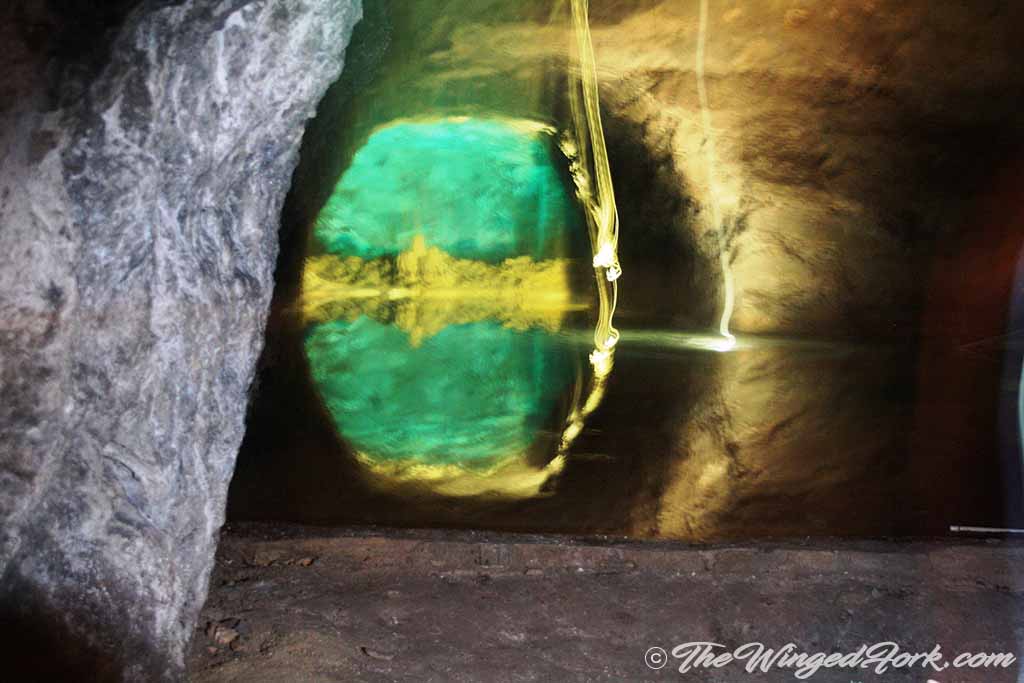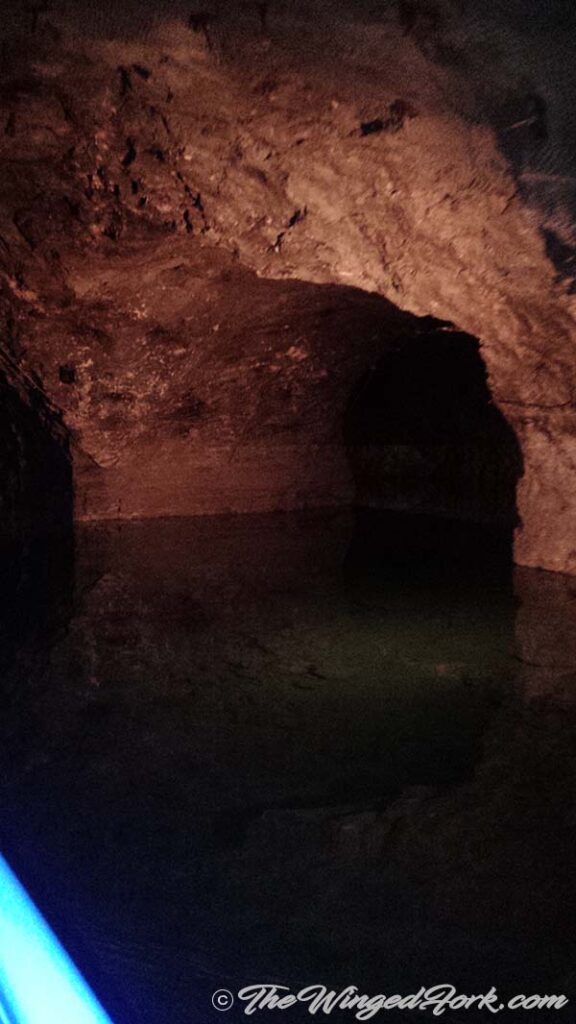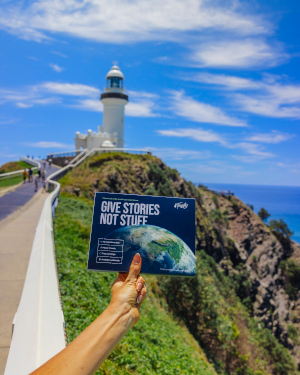A Lake Under A Lake Under A Mountain!
Seegrotte’s underground Blue Lake, and the tale to go with it. Gluck Auf!
So as I was saying last week, it turned out to be a bargain. For around 49 Euros each we got to see Heiligenkreuz Abbey, Karmel Mayerling, and Seegrotte Hinterbrühl, and didn’t have to shell out anything for transport or entrances.
If you missed last week’s blog, my sis and I were boarded at the Austria Trend in Vienna for a week and were running out of time on our last day in Vienna. So we didn’t want to waste time waiting for connecting buses from Wien Oper to Baden bei Wien, and then from Baden bei Wien to Karmel Mayerling.
By the way, if you’re looking for hotels to stay at, my friend Anca has some great suggestions for where to stay in Vienna.
While looking for day trips from Vienna, someone told us about this half day seat in coach trip that would take us there and be economical as well.
So we joined this trip group to see Karmel Mayerling and got to see Heiligenkreuz Abbey and Hinterbrühl Seegrotte as well. So last week I covered my sister’s crazy voices after seeing Mayerling Chapel. This week I continue about Seegrotte, Austria.


The tour of Seegrotte Hinterbrühl
The Seegrotte tour began with a walk of 450 feet through a narrow tunnel into the heart of the Hinterbrühl mountain.

We reach a large chamber that in the upper level where we have to go down steep slides to the lower level. The guide made us go through in groups of four. Well, except for him. He just whizzed down on his own.
We almost expected not to stop at the bottom and fly over the end, but surprisingly all of us stopped just short of flying over the end. Some really good mechanics at work, though I haven’t gotten around to opening the textbooks yet.
At the lower level, we saw a number of artefacts and objects that were used in the gypsum mine when it was active from 1848 to 1912.
We also learnt about how an underground blasting operation that went off beam caused the mine to flood with 20 million litres of water, creating Europe’s largest subterranean lake.
The mine stayed closed till some cave explorers found it in 1930, post which it was opened as a museum to the public.


Gypsum Mine used as Airplane Factory
However, during the Second World War, the mine was taken over by Hitler’s army and used as an airplane factory. One of the world’s first fighter jets, the “Heinkel HE 162 Salamander” was built here. It was supposedly a secret weapon of the German Luftwaffe, but thankfully was never used.

As we travel further into the mine, we see a crystal clear lake called the Blue Lake. It’s about 3 meters deep and has a surface area of 300 square meters, with a water temperature of about 8 degrees Celsius.
By the way, one fascinating bit about the entire Seegrotte mine is that it is permanently 9 degrees Celsius down there, come rain or snow. Need to research about the how bit.
One more level down, and there is a Saint Barbaramuseum or a Barbara Kapelle that was constructed in 1864 in memory of all the miners who have lost their lives.
Saint Barabara is the patron saint of miners. Masses were held in this chapel every year till it couldn’t hold enough people anymore.
The two letters G and A on the altar read “Gluck Auf’ meaning ‘Good luck’! We also passed by a number of niche tombs in the walls for the miners.

We also saw a horse stable and a museum with artefacts from mining and from the airplane factory. The horses here supposedly never saw daylight again after reaching the mine.
They also lost their eyesight over time, since the mine did not have decent lighting in those days. Really crappy conditions. Where were the animal right activists in those days?
Ride on the Underground Big Lake
The last bit of the tour was a boat ride across another underwater lake called the Big Lake. The water in this lake would usually around 2 meters high, but is kept waist deep by pumping out over 50,000 to 60,000 litres of water every night. Hence, it has an average depth of 1.2 meters and a surface area of about 6,200 square meters.
I wanted to ask why they needed to pump out the water to attract tourists? Couldn’t they just let the mine fill up and use it as a great inland scuba destination? Maybe the mine owners never thought of that, eh?

Anyways, this lake was also used in the 1993 version of the movie ‘The Three Musketeers’. There’s a replica of the vintage-looking boat that was used in the movie too. So we start the 10 or 15-minute boat ride (on another modern-day boat), get a few good pictures, but my camera’s finding it difficult to adjust to the dark. So I rely on my sister for photographs.


Surprise on the Lake
But at one point in the ride, we are told that we’re exactly 20 meters (I think the guide said 20 meters) below the Blue Lake that we’d seen a while back. That was amazing!
Just the chance to tell people that you rode a boat on a lake that was under another lake under an Austrian mountain. That was the best part. Absolutely worth it!
I probably won’t go to Seegrotte again. Well, unless they turn it into a scuba tunnel for me. It may be a bit overrated, but for a one-time visit, it was something to remember and talk about. And blog about too! 😉
Information about Seegrotte, Vienna:
Grutschgasse 2a, 2371 Hinterbrühl, Austria
Mail: office@seegrotte.at
Phone: +43 (0) 664 26 24 454
Website: https://www.seegrotte.at/
Other Info And Things You Might Need
Other Posts to Read
- I lost my apple twice: Misadventures in a Kayak
- Hiking Tongariro
- Where to eat in Goa
- Weekend break to Northern Ireland
- Appalachian trail hiking



I’m an East Indian foodie and travel blogger from Bombay, India. I’ve travelled across parts of Europe and Asia, and love writing about my experiences with people and cultures. And naturally, I love food, wine, and travel, and have an endless bucket list of places to go to, and experiences I must blog about.
I also love baking and experimenting with food, with a little help from my family. If you must know, my favorite things are nice rainy days, the smell of cakes in the oven, playing in the snow, glasses of wine, and dark chocolate.
More info about me here!






Akys dziaugiosi skaityti!
Oh lord I envy you the ability to do this tour it looks so interesting. My claustrophia would kick in big time and the slide nope can’t go there..lol…but I can live vicariously through your photos and what a great way to get around cheaply.